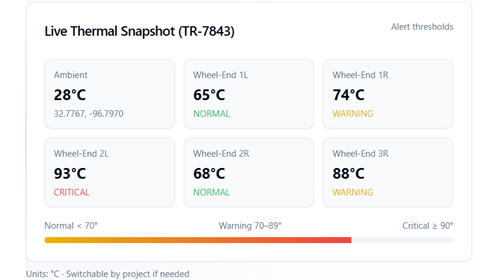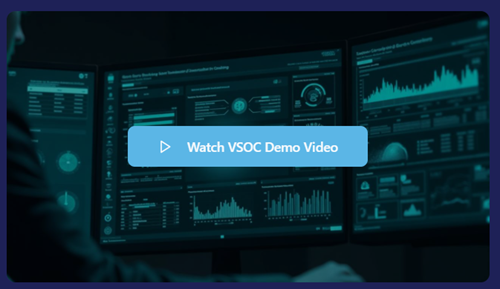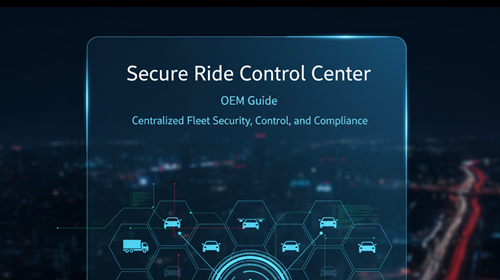
/
June 4, 2024
/
#
Min Read
The Future of Software-Defined Vehicles
It was not so long ago that I was working with small electronic control units (ECUs) and dealing with diesel and gasoline cars. Fast forward 15 years, and the landscape has drastically changed. Today, it's all about electric vehicles (EVs) and software-defined vehicles (SDVs). My journey in the automotive industry has allowed me to witness this remarkable transformation firsthand, highlighting the growing significance of software-defined vehicles, which are now being hailed as the next big thing in the automotive world. Here is a compilation of my readings and thoughts on SDVs
What is a Software-Defined Vehicle
A software-defined vehicle is a modern concept in the automotive industry where vehicles are designed to be fully programmable. This means that a carʼs functionality can be updated and improved through software updates rather than requiring physical changes. This approach is similar to how smartphones receive updates to enhance performance and add new features.
Key Features of SDVs
Programmability and Updates
SDVs are built to be fully programmable, allowing new features to be developed and deployed within months instead of years. These updates can be delivered wirelessly, ensuring that the vehicle improves over time without needing physical modifications.
Customer Experience
The primary goal of a software-defined vehicle is to enhance the customer experience. Unlike traditional vehicles, which often have limited updates after production, SDVs can continually receive new features and improvements. This ensures that the vehicle remains up-to-date with the latest technology and customer preferences.
Cross-Domain Applications
Software-defined vehicles enable a blend of various vehicle systems to create a cohesive and enriched user experience. For example, an SDV can monitor the health of passengers, adjust driving styles to reduce motion sickness, and provide a personalized environment by using data from multiple sensors and systems within the vehicle.
Learning from Other Industries
The software-defined vehicle concept draws inspiration from the smartphone and internet industries, which have successfully utilized standardized APIs, hardware abstraction, and app stores to create flexible and upgradable systems. This allows for a unified approach where developers can create applications that work across different vehicle models, similar to how smartphone apps function across various phone models.
Challenges and Solutions
Complexity and Heterogeneity
The automotive industry deals with higher complexity and a greater variety of product variants compared to the smartphone industry. Each vehicle is a complex system of systems, often with components sourced from various suppliers, leading to integration challenges.
Functional Safety
Unlike smartphones, vehicles must adhere to strict safety standards like ISO 26262, which governs the functional safety of electrical and electronic systems. This ensures that new software updates do not compromise the vehicle's safety.
Organizational Transformation
To successfully implement software-defined vehicles, automotive companies must undergo significant organizational changes. This includes integrating traditional engineering practices with modern software development methods, such as Agile and cloud-based development.
Current Perspectives from Big Automotive OEMs
Big automotive OEMs are actively pursuing the integration of SDVs, recognizing the potential for continuous improvement and enhanced customer satisfaction. They are focusing on the following aspects.
Digital-First Approach
OEMs are adopting a digital-first approach, starting with the digital customer experience and working backward to the solution designs. This involves engaging in early exploration and testing to ensure that vehicles on the road align with the evolving needs of modern consumers.
Value Stream Management (VSM)
OEMs are implementing VSM to manage development at different speeds. This approach helps in synchronizing various value streams, allowing digital and physical development to coexist and progress efficiently.
Open Ecosystem and Standardization
There is a strong push towards creating an open ecosystem involving OEMs, start-ups, developers, and innovators. This collaborative environment aims to drive innovation and develop new use cases for SDVs. Standardized APIs and hardware abstraction layers are being emphasized to ensure interoperability and ease of development
Future Prospects
The shift towards software-defined vehicles represents a major transformation in the automotive industry, focusing on creating a "habitat on wheels" that continually evolves to meet customer needs. This transformation requires adopting a digital-first approach, leveraging virtualization, and ensuring that software updates can be applied seamlessly to improve vehicle functionality and safety over time. Furthermore, SDVs pave the way for enhanced connectivity and integration with smart infrastructure, enabling vehicles to communicate with traffic systems, other cars, and even smart homes. This connectivity can lead to improved traffic management, reduced accidents, and more efficient energy use.
The flexibility offered by SDVs also means that vehicles can be easily adapted for various uses, from personal transport to shared mobility services and even autonomous delivery systems. As major automotive OEMs continue to invest in SDV technologies, we can expect a surge in innovative applications and services that will redefine mobility. The ongoing development of artificial intelligence and machine learning will further enhance the capabilities of SDVs, making them smarter and more responsive to user needs. Overall, the future of SDVs promises a more dynamic, connected, and user-centric automotive experience.
Finally, SDVs promise to revolutionize how we perceive and interact with vehicles, making them more adaptable, personalized, and up-to-date, much like our smartphones. This shift enhances the driving experience and aligns with the rapid technological advancements in the automotive sector.










